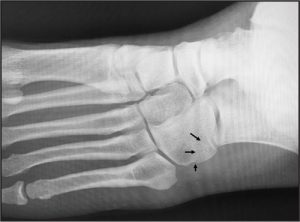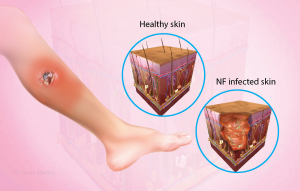
A nutcracker fracture is a type of foot fracture that occurs when the cuboid bone, located on the outer side of the foot, is crushed between the heel bone and the fourth and fifth metatarsal bones.
This type of fracture can occur as a result of a sudden injury, such as a fall or a direct blow to the foot, or from overuse or repetitive stress on the foot. Symptoms of a nutcracker fracture of the cuboid may include pain, swelling, bruising, and difficulty bearing weight on the affected foot.
Diagnosis is typically made through a physical exam and imaging tests, such as X-rays or CT scans. Treatment for a nutcracker fracture of the cuboid may depend on the severity of the fracture, but generally involves immobilizing the affected foot with a cast or brace and allowing time for the bone to heal. In some cases, surgery may be necessary to realign the fractured bone and stabilize the foot. Physical therapy may also be recommended to help restore range of motion and strength to the affected foot.




